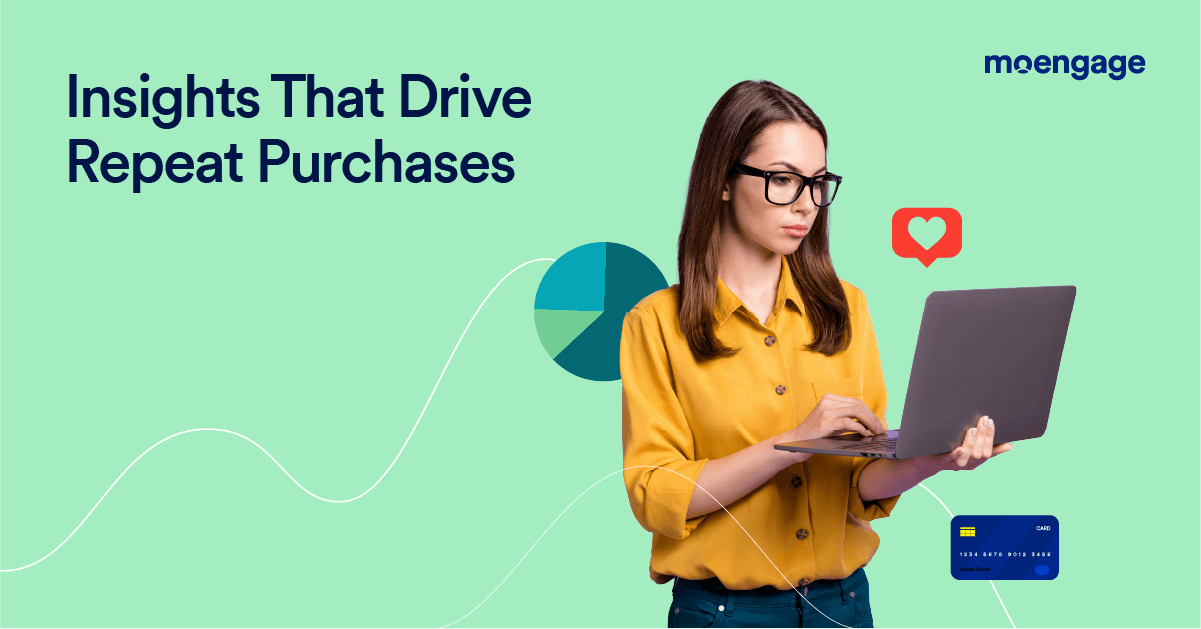How You Can Leverage Analytics To Drive Loyalty

Reading Time: 8 minutes
The best business strategies stand the test of time and seldom change through history, and loyalty programs are a testament to this. The first known loyalty program was started in 1793 when a merchant in New Hampshire began rewarding customers with ‘copper tokens’ they could use for future purchases. More than two centuries later, loyalty programs are still as crucial, if not more important, than they were earlier.
Loyalty Programs have been used worldwide for a long time because they create a sense of loyalty to the brand that goes beyond monetary considerations. But here’s the catch: though simple in principle, loyalty programs are very challenging to build. Many elements go into creating a successful loyalty program, and at the core of it is understanding your customers’ persona.
In this blog, I’ll take you through what I’ve learned from a career in building loyalty programs:
- What makes consumers loyal to a brand,
- How to tie acquisition to loyalty,
- How analytics can help build a loyalty program that creates a base of dedicated customers for your brand.
|
👉You can also listen to this article as a podcast! Check it out 🎧 |
The Psychology Behind Loyalty

Loyalty is simply a relationship between a brand and a customer. Many elements drive a customer’s loyalty to a brand, but the most crucial aspect is the brand understanding them in a deep and meaningful manner. Once you create a connection, it becomes a lot easier to engage with them regularly.
This means you need to find out their purchase histories and preferences, and go one step deeper to look at why they make these purchases, what impacts their decision to buy, and every other factor that influences them in their buying journey.
With loyalty programs, it’s not just about getting the customer to sign up for the program. The challenge is getting them to repeatedly use the program and return to your brand. This is only possible if the customer feels the brand is helping them somehow.
Beyond Pushing for Purchases
A good loyalty program doesn’t just keep pushing purchases toward its customers but instead tries to create conversations to understand them better.
Such conversations with customers get them thinking about the brand, the products, and what they want to buy. It’s the feeling of being understood that brings customers back. Brands that have nailed the loyalty game, like Apple and Starbucks, have understood this and put in a lot of effort to discover what their customers are thinking.
When you design a loyalty program, make sure that the transactions customers perform are two-sided, involving your brand at some point as well, giving you a chance to interact with them.
Insights That Drive Repeat Purchases

While there are many insights to keep an eye on, the most important ones tell you what your customer is thinking and why they’re behaving the way they are. These metrics are not standard and will vary based on the industry.
For example, in E-commerce, something like religious beliefs can be an influencing factor. During Shraadh Paksh, a 16-day period for paying respects to one’s ancestors, many Hindus avoid shopping. So brand communications during this period can be ineffective and even insensitive to some customers. But this situation is reversed during Diwali, and everyone is on a shopping spree.
The nature of brand communications makes a massive difference in driving repeat purchases. A customer will feel inclined to make multiple purchases from a brand only if their communication is done in a relevant, effective, and timely manner.
In a sea of numbers, it’s easy to lose sight of the metrics that make a difference. The best way to find out numbers that matter is to put yourself in your customer’s shoes and look at what impacts their decision-making.
Analytical Models to Understand Loyalty
Customer Lifecycle Modelling

The customer lifecycle model is the most popular model for understanding customer loyalty. In this model, you identify customers at different stages of their customer journey and accordingly guide them in their integration with the brand.
Your communication with a customer who has just started using the brand will be very different from that of a customer who has been with your brand for over a year. While the objective of the former will be to showcase benefits and get them to use your product, the latter will focus on retaining them as customers by keeping them interested in your brand.
As you improve your customer understanding, you can create different journeys for different customer segments based on their likes and dislikes. For example, you might create a completely different customer journey for men, women, children, and senior citizens. Once you create customer journeys for all your segments, you will know where and how to reach/engage each of them.
Lookalike Modelling

Another model that comes in very handy when trying to cross-sell products is lookalike modeling. With this one, you first find the ideal customer base for your brand and then find customers most similar to this group, i.e., their lookalikes. Then, you can engage them with relevant messaging.
This model can be used by retail brands that want to cross-sell their products. This model also opens up your brand to newer customers you have yet to reach out to.
Propensity Modelling

The propensity model predicts the next product or category your customer will be interested in based on their existing purchases. You can then tailor your communications based on these analytics.
The propensity model is beneficial to app-based shopping platforms, where the apps try to show the customers a product they would be most interested in buying next, attempting to induce a purchase. Food delivery apps use the same strategy, and that’s why you get recommendations for your favorite food just at the time you’re hungry.
Segment of One

Once a buzzword and now a commonly used marketing strategy, segment of one is based on the premise that customers don’t belong to large segments that can be bombarded with generic information. Instead, each customer is treated as a segment of their own.
By treating every customer as one segment and understanding their likes and dislikes, you ensure that the communications sent out to customers are most relevant to their needs. Periodic and relevant communications to customers can be very beneficial in the long run.
The Role of NPS

A brand’s most vital customers are those referred to the brand by someone they trust, like family members or friends. So your loyalty program’s goal must be to deliver a good, comfortable experience to the customer. Once that happens, they start referring other customers, and you get a stream of new customers.
Net Promoter Score (NPS) is one of the most critical metrics for your brand because it is directly tied to how your customer feels about your brand. Interestingly, with the right analytics, you can connect what your customer feels about your brand to customer sentiment at a transaction or interaction level.
It’s essential that you analyze these analytics properly. Using analytics, you can identify points in the journey where there is churn or dropoffs and address the issue at its core. This directly translates to a good experience that makes customers refer your brand to those in their circle.
But the problem brands face with keeping a check on their NPS is the need for collection mechanisms. This data either does not get collected or gets collected ineffectively. You must put in place systems that find out the reasons for churn and effective tools to collect NPS data.
Winning Back Lapsed Customers

Most brands think that customers lapse only because of an unfortunate experience, making that the core focus of their retention strategy. While it’s true that bad experiences will cause dropoffs, that’s not the only reason for it. It’s possible that the customer is just trying out other brands and wants to get a feel of all the major brands in the market.
To make retention easier, leverage customer analytics to understand the cause of customers lapsing. You must study this carefully before planning your retention strategy.
While looking at customer analytics, search for patterns among lapsed customers. If you find a pattern, you can study it in detail and find out the reasons for it. But remember, you might not always find a pattern. Customer behavior is erratic, and various factors might contribute to their lapse. There might even be a section of customers that have had a good experience but still need to drop off.
My Experiences With Building Loyalty Programs
I’m a firm believer that customer loyalty is all about having meaningful conversations with the customer. If the customer sees the brand as a friend, they will return to you.
This has been the guiding philosophy of the loyalty program we’ve built at Flipkart, where our Flipkart Plus members are pampered with many benefits like early access, free shipping, exclusive offers, and more. We try to understand what the customer is looking for and deliver that to them.
Earlier, when I was at Payback, an exciting campaign we ran was something called ‘Payback Days,’ where we nudged customers to use the points they’d accumulated from one or two brands for purchases from other partner brands.
This was a collaborative effort with most of our partner brands offering extra discounts for purchases made during these three days. A big takeaway was that a well-executed loyalty program and the right offers and discounts could work wonders for your brand’s sales.
What’s key is ensuring the messaging about the loyalty program and the offers engage the right customer segment.
Playing the Long Game
My most significant learning from working on loyalty programs is that they are never built in a day. It takes months, or even years, of understanding customer behavior and usage patterns to build a loyalty program that will keep bringing customers back.
While you do have to play the long game with loyalty programs, it is never static. You can always make small changes to improve it. Take a constant look at the performance of your loyalty programs and keep asking questions: How is the program’s visibility? Can the onboarding process be improved? How attractive are the benefits being offered?
Ask yourself the smallest questions about your loyalty program and update it regularly based on what works and doesn’t. Over time, these minor changes will make a huge difference and create a base of loyal customers.
If there’s one thing I can stress on, it’s that truly loyal customers cannot be bought. They can only be nurtured by having conversations and making them feel understood.















